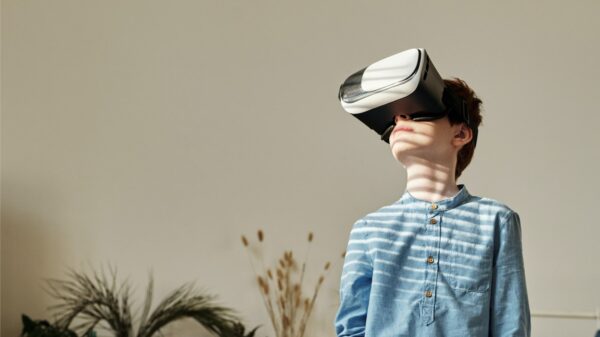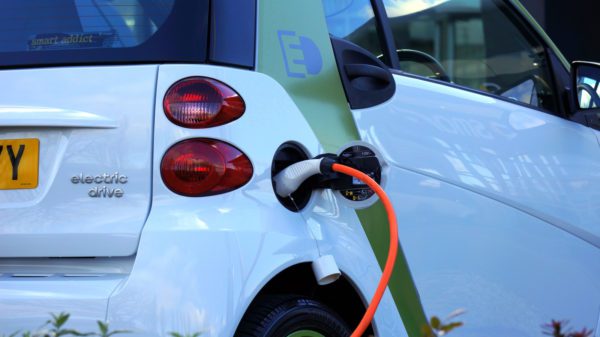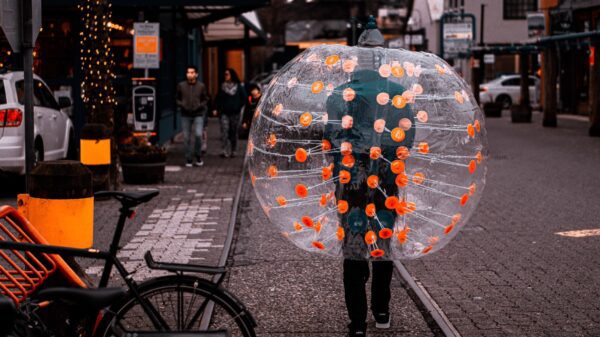Over the past 60 years, skin cancer has become the most common form of cancer in the United States and has become a major public health issue, drawing a call to action from the U.S. Surgeon General.
Preventing skin cancer, in theory, is simple. The American Academy of Dermatology recommends using abundant amounts of sunscreen and covering up as much as possible. Needless to say, this is cumbersome — which is why most people just use their best judgment. This is where wearable innovator Shade comes in.
Founded in 2014 at the Jacobs Technion-Cornell Institute in New York, and funded by the Department of Health, Shade has spent years developing a miniature ultraviolet sensor that competes with expensive, laboratory-grade scientific instruments. Shade has done extensive clinical testing at top-tier institutions such as Weill-Cornell Medicine.
Now, Shade has introduced its technology to consumers as a smart wearable sensor. The sensor has a high-end, matte finish and is worn using a strong magnetic clasp that attaches securely to clothes without damaging them. Paired with an intuitive and well-designed companion app, Shade is actively building a platform to help people enjoy the outdoors while remaining one step ahead of adverse health effects.

Why Shade is different
We’ve all come across the term “UV Index.” It is a measure of how strong the UV rays are and is available on most weather apps—but this information suffers from two major shortcomings.
First, it is only an estimate at the ZIP-code level. Depending on where you are, the UV Index varies by up to 500 percent from this estimate. Second, it does not take into account the length of time of exposure. Being exposed to a UV Index of 1 for one hour has the same impact on the skin as a UV Index of 10 over 6 minutes.
When I asked founder Dr. Emmanuel Dumont about other smartwatches or tattoos on the market that measure UV exposure, he showed me a video of these products recording zero exposure when placed under a powerful UV lamp.
“Because UV rays are such a small portion of sunlight, it is extremely difficult to pick them up. So these products take a shortcut: they guess at the UV by measuring brightness, leading to dangerous inaccuracies,” Dumont said. Shade, on the contrary, manufactures each sensor under a stringent quality system in a high-tech laboratory.
“The accuracy of our sensor relies on proprietary silicon chemistry, filter system, calibration systems, and embedded machine-learning algorithms to improve its measurements in real-time,” Dumont said.

How Shade works
When I took the Shade sensor out of its box, it felt like a premium product with a super-soft finish that I couldn’t stop touching. After downloading the app, it asked me to pick a daily limit of UV exposure based on how my skin usually reacts to the sun. This limit is not definitive, as I was able to adjust it at any point later on, in case it turned out that my skin can handle more or less UV than I thought.
When I paired my sensor to the app, I was at my office in New York, standing in front of a large window. The sensor started picking up UV exposure immediately. According to Dumont, “UV rays in the 310-400 nm region, also called UVA, travel well through many windows. They are known to have a long-term impact on the skin.”
At every 20 percent of your daily UV limit, the sensor buzzes discreetly, and the app sends a notification so that you know exactly where you stand vis-à-vis your exposure. The sensor goes for about ten days without having to re-charge it. It can withstand rain without any issue but do not drop it in water or put it through the wash. If you’re at the beach, just leave it in your bag. It will still measure UV, but you won’t risk losing it in the water. Shade also works with the most popular form of sun protection: sunscreen. If you apply sunscreen, simply report it in the app and the sensor will take the sun protection factor (SPF) into account when measuring your UV exposure.
Reviews of the sensor are glowing.
“Now that I have my Shade UV sensor, I can enjoy my time in the sun knowing that Shade will remind me when it’s time to reapply sunscreen and when I’m near my max UV exposure for the day, so I can seek shelter and stay healthy,” Julie, a Shade customer, wrote in a public review.
Similar to thermometers or glucose meters that revolutionized healthcare by replacing guesswork with actual data, Shade’s ambition is to do the same in dermatology. Its thorough scientific and clinical validation have the potential to finally curb skin cancer, once and for all.
For more information about Shade, click here.
This post is sponsored by Shade.


























